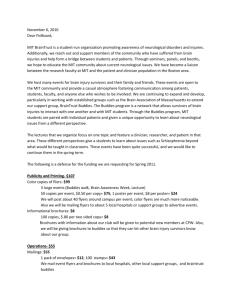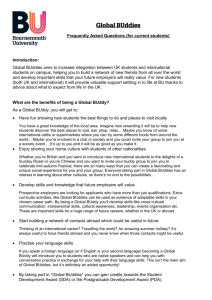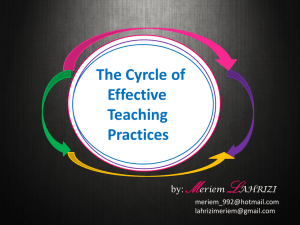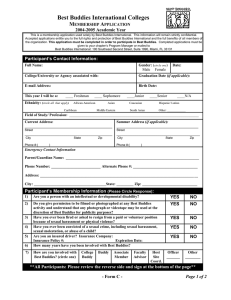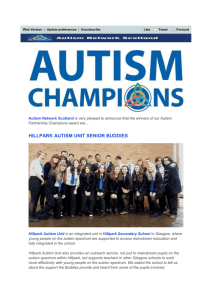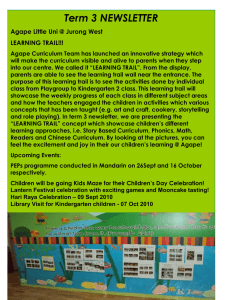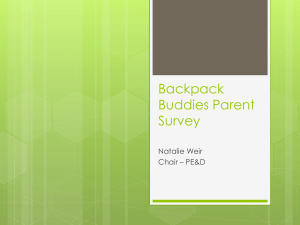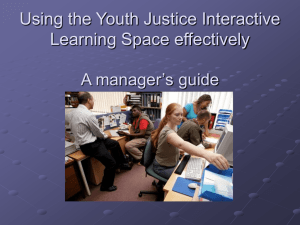Student Motivation in Reading
advertisement
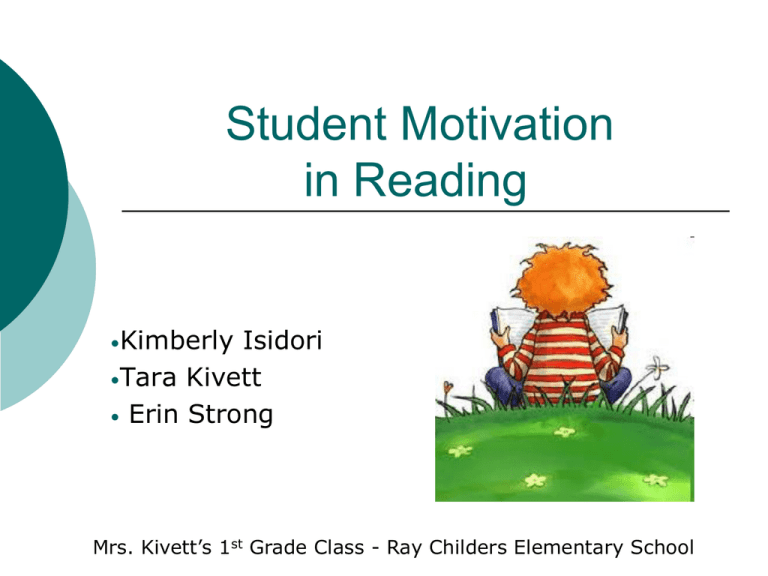
Student Motivation in Reading •Kimberly Isidori •Tara Kivett • Erin Strong Mrs. Kivett’s 1st Grade Class - Ray Childers Elementary School Background Student Motivation to read is effected by: Student reading appropriate-leveled books that interest them Positive social interactions during reading Parental effect on time and energy put forth in reading both during school and at home The Problem We found that even in the first grade, many students are already unmotivated to read Unfortunately, many parents do not promote reading in the home Many students feel that reading is a “chore” Many students do not read for enjoyment – only when required Many students that do not read often read below grade level Literature Review Research Questions How will the use of book buddies affect student reading motivation? What effects do parents have on motivating their students to read? Participant Demographics Mrs. Kivett’s First Grade Classroom • 18 students (10 boys/8 girls) • Fountas and Pinnell Levels ranging from 1718 and higher to 9-10 and below • 2 students receive ESL services • 2 students receive EC services (one has Autism) Ray Childers Elementary School • Located in Burke County, NC • Title I school • Mostly middle and lower-middle class students Participants For Book Buddies: • 6 lowest scorers on the Garfield Reading Interest Survey • (turned out to be all boys) For Parent Motivation: • All 18 students (10 boys and 8 girls) • *One student did not return their survey or reading goal Intervention Procedure • Book Buddies – all students in the class were paired with a 3rd grade “book buddy” (all above grade level readers) who would read to them and listen to them read • Book Buddies met twice a week for 5 weeks total • Each interaction was 20 minutes long Data Sources Book Buddies • Garfield Reading Interest Survey • Observations of Book Buddy interactions • Interviews with reading teacher Parent Motivation • Questionnaire about reading practices in the home • Reading Logs • Interviews with the students Data Collection: Book Buddies Garfield Reading Interest Survey •(pre/post test results): this was administered to the students who were able to rate their feelings about reading by circling the picture of Garfield that best depicted their feelings Observations of Book Buddy Interactions •Informal observations of the 6 selected students occurred during each session Interviews With Reading Teachers •The teacher was asked to comment on each student’s attitude toward reading Data Collection: Parent Motivation Questionnaires • Parents were sent surveys containing multiple choice questions about reading practices in the home Reading Logs • Parents set a goal for how many books they wanted their child to read over the 5 weeks. Their books were then recorded in reading logs. Interviews with the Students • The 6 students focused on for Book Buddies were asked about what motivates them to read Data Analysis Book Buddies • Tests were scored according to a rubric and results were placed in a table showing pre/post scores • Observations were coded according to type of interaction (positive/negative) • Interviews with reading teacher were coded according to whether the responses indicated a positive or negative attitude towards reading Parent Motivation • Surveys were multiple choice so results were tallied • Total number of books read over the 5 weeks was compared to the goal set in the beginning • Student responses were coded according to whether their response indicated a positive or negative attitude toward reading Results from Book Buddies During reading time with book buddies, students were observed: • Listening and following directions • Correcting mistakes when told to do so • Answering questions when asked • Reading loudly and expressively • Watching and paying attention to how the book buddies read their books Notable decrease in attention span when book buddies read their books first Results from Parent Survey How Often Parents Read With Their Child? 6% 2 or more times a day 12% 29% 53% Do Parents Set Reading Goals for their Child in the Home? Once a day A few times a week Other 47% 53% Yes No Results from Parent Survey How Would You Describe Your Child’s Attitude Towards Reading? Extremely motivated to read and enjoys it 6% 12% 24% 58% Likes to read, but not all the time Will do required school readings, but does not choose to read on his/her own Does not like reading, struggles to do assigned school readings Parent Goal Results Student Reading Goal (# of books) Actual # of books read Student Reading Goal (# of books) Actual # of books read I.N. 55 10 K.G. 20 8 A.S. 50 21 B.F. 20 7 H.P. 40 26 A.H. 35 10 K.K. 20 7 A.G. 30 7 S.L. 15 15 P.W. 25 20 X.B. 15 5 S.P. 25 8 B.M. 10 8 Y.D. 22 2 M.F. 10 7 L.B. 20 9 G.S. 10 4 **Y.D. lost her first reading log Discussion What we learned from our study so far: • Students’ motivation to read is affected by several factors • Every student is different in how they respond to books and reading • Having role models to show appropriate reading strategies can help motivate students • Social interactions play a big part in building students’ motivation and excitement to read • Teachers/parents should be aware of unmotivated students and how to help make reading a more engaging and enjoyable process. Future Research More research could be done to study the effects of the Book Buddies Intervention over a longer period of time to see if more growth occurs in terms of motivation. Also, future research could focus on not only the younger students, but the older book buddy partner as well to see advantages from both perspectives. Resources Bullen, G.F. (1970). A study in motivating children to read, 24. Gambrel, L. (1996). Creating classroom cultures that foster reading motivation. The Reading Teacher, vol. 50, (1), 12. Zimmerman, B., Bandura, A., & Martinez-Pons, M. (1992). Self-motivation for academic attainment: the role of self-efficacy beliefs and personal goal setting. American Educational Research Journal, vol. 29 (3), 14.
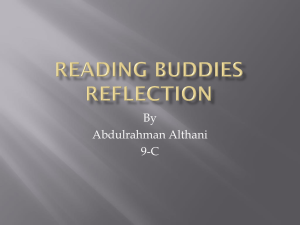



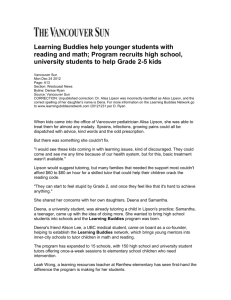
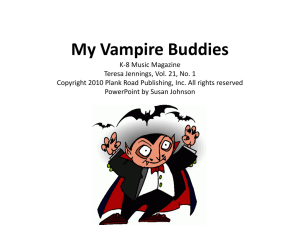
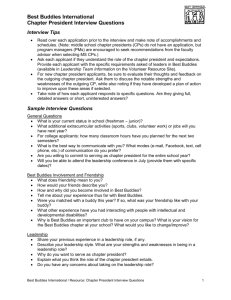
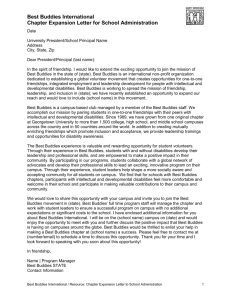
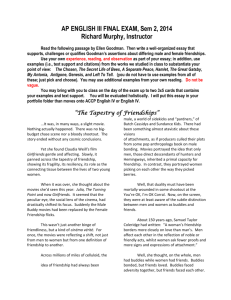
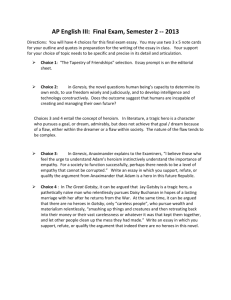
![BBK_August_Progress_Report[1]](http://s3.studylib.net/store/data/007473706_2-f326986498e5a963bc0e82c6f1d8ac5b-300x300.png)
